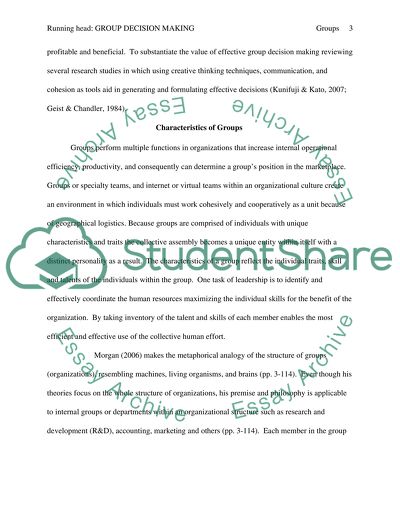Cite this document
(“The Effectiveness of Group Decision Making Term Paper”, n.d.)
Retrieved from https://studentshare.org/sociology/1424688-group-decision-making
Retrieved from https://studentshare.org/sociology/1424688-group-decision-making
(The Effectiveness of Group Decision Making Term Paper)
https://studentshare.org/sociology/1424688-group-decision-making.
https://studentshare.org/sociology/1424688-group-decision-making.
“The Effectiveness of Group Decision Making Term Paper”, n.d. https://studentshare.org/sociology/1424688-group-decision-making.


